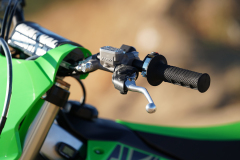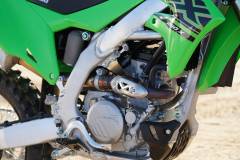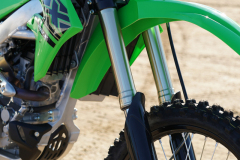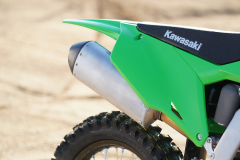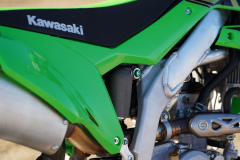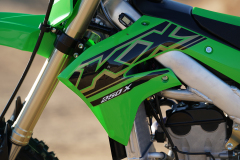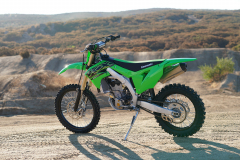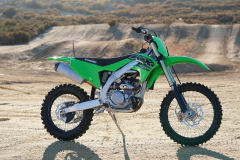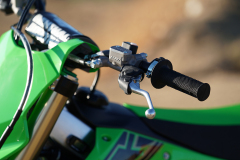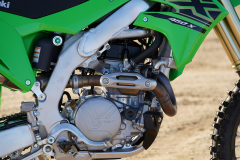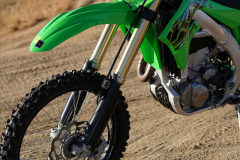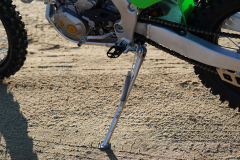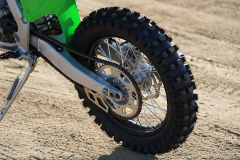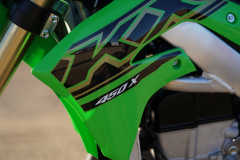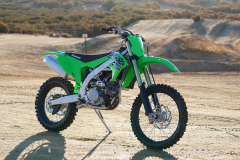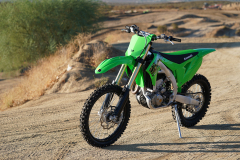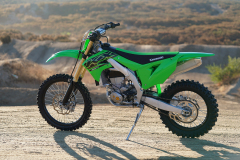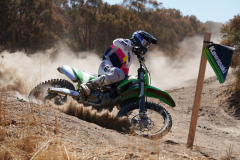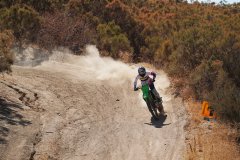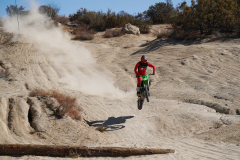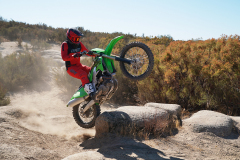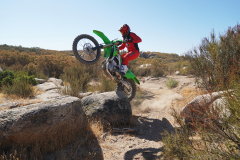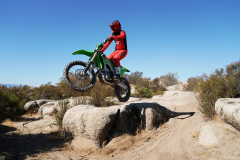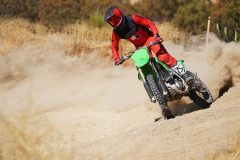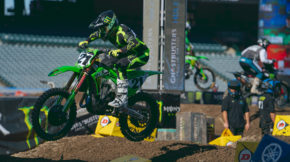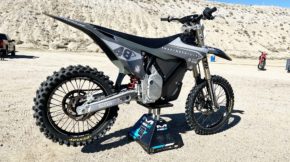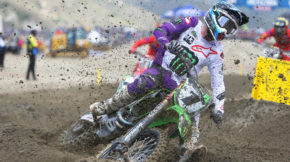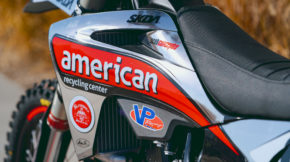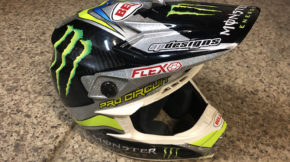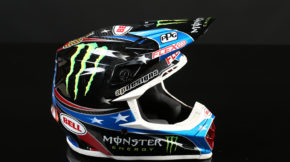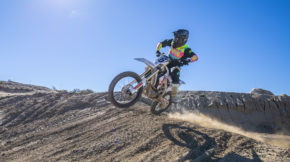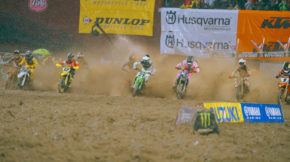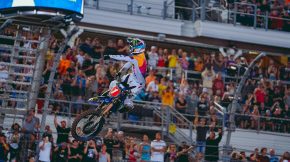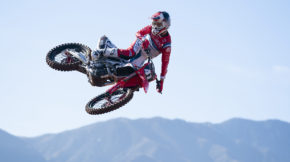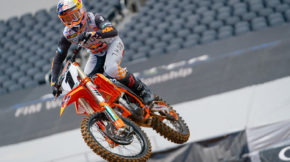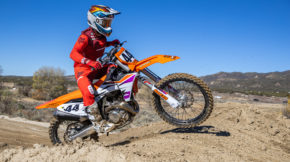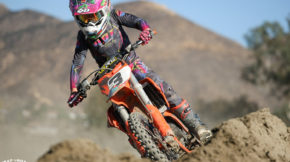First Test Of The 2021 Kawasaki KX250X & KX450X
Share
The closed-course off-road motorcycle category has seen plenty of growth over the last five years, an uptick in interest that comes thanks to the limitless ride time wide-open areas offer compared to short sessions at the motocross track, and racing events around the country have seen increased turnouts. Manufacturers have noticed the trend and now nearly every major brand has added purpose-built models for the desert and trails in their product line, including Kawasaki. The Japanese brand’s product line grew in 2021 with the Kawasaki KX250X and Kawasaki KX450X motorcycles, two new additions that continue the competitive lineage of the KX line.
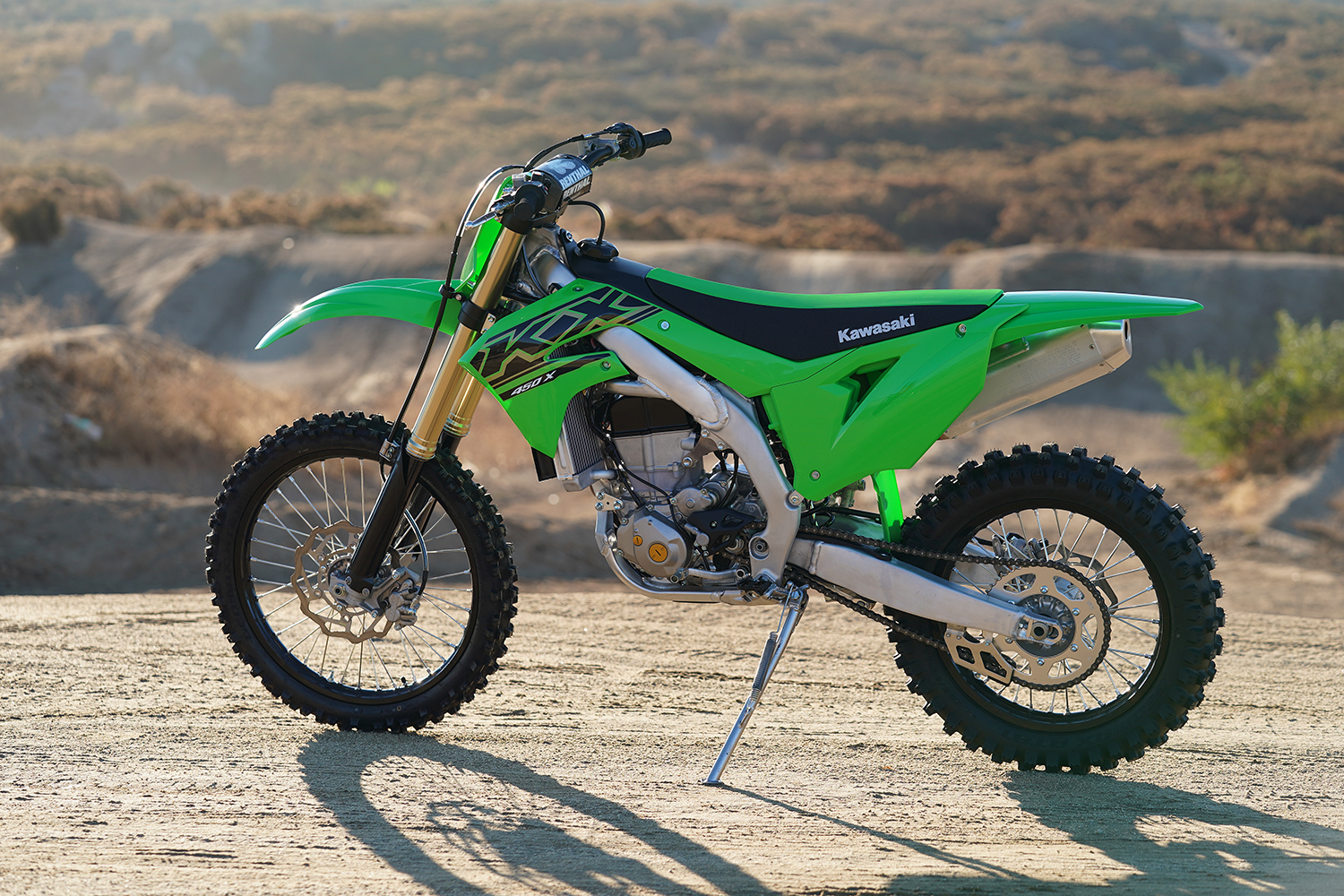
It’s no coincidence that the KX250X and KX450X look a lot like the KX250 and KX450; they’re basically the same bike. Kawasaki used the motocross models as the base for the off-road bikes, everything from the engine to the chassis to the suspension, and made the necessary changes for the different conditions and terrain. What’s the difference? A refined engine character thanks to gearing changes, softer suspension settings, and off-road components like an 18-inch rear wheel, Dunlop AT81 tires, a kickstand, skid plate, and brake guards. All of these changes are what off-road riders do when they convert motocross bikes, but now they’re standard issue equipment at a much lower cost than when purchased individually (the 250X is a 100-dollars and the 450X is a 200-dollars more than the MX counterparts).
To make the engine power more manageable, Kawasaki went up one tooth on the rear sprocket of both bikes, a subtle change for added acceleration. The engine internals of the KX-X bikes remain the same as the standard KX, and they make use of Kawasaki’s three couplers for different power profiles. The biggest changes are in the suspension, as both bikes were set up a bit softer to cope with the long, bumpy rides. The KYB fork and shock used on the KX450X were dropped one spring rate and feature new internal valving and settings, the fork on the KX250X also has a softer spring rate, but the shock stayed the same; both bikes have updated internal valving and settings.
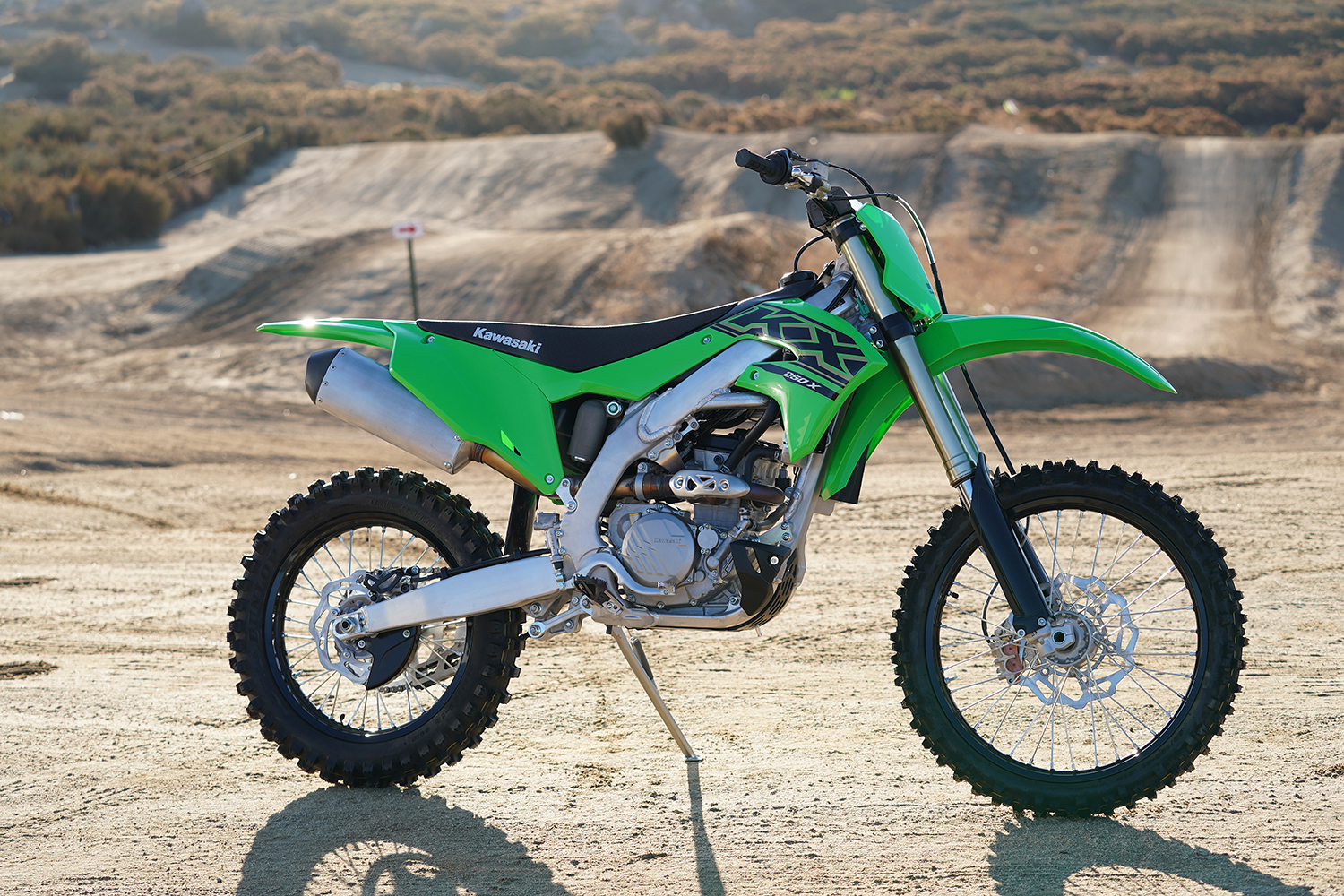
What’d we think after our time in the saddle? Kawasaki definitely retained the racy feel with the KX250X and KX450X, as the engines of both bikes retained the overall power while having a slightly stronger low-end pull, thanks to the larger rear sprocket size. The engine could be lugged over treacherous terrain or single-track trails without much effort, but still had plenty of snap to get over obstacles or out of tight spots with ease. Our one gripe was that the KX450X flamed out on our test riders a few times, particularly when they crawled through rock gardens, and this is something we will pay attention to when we take the bikes to different locations. The engines were solid everywhere else on the track, as they felt very similar to the motocross bikes and had just a little less up top, also due to the gearing changes.
The suspension changes and 18-inch rear wheel are the big differences. We were familiar with the components and the actions of the 250X’s Showa and 450X’s KYB suspension, so the feel of the softer settings is where much of our attention was directed. Going down a spring rate gave both bikes a cushier ride, especially over things like rolling whoops, high-speed roads, and modest jumps. As one would expect, the softer suspension isn’t suited for things like big jumps, but rarely do you see things like a 75-foot triple when out on the trail, so it’s really a non-issue. The smaller 18-inch rear wheel has an influence on the handling of the bikes, particularly in corners, but is a common trait of the smaller wheel and something that off-road riders are used to.
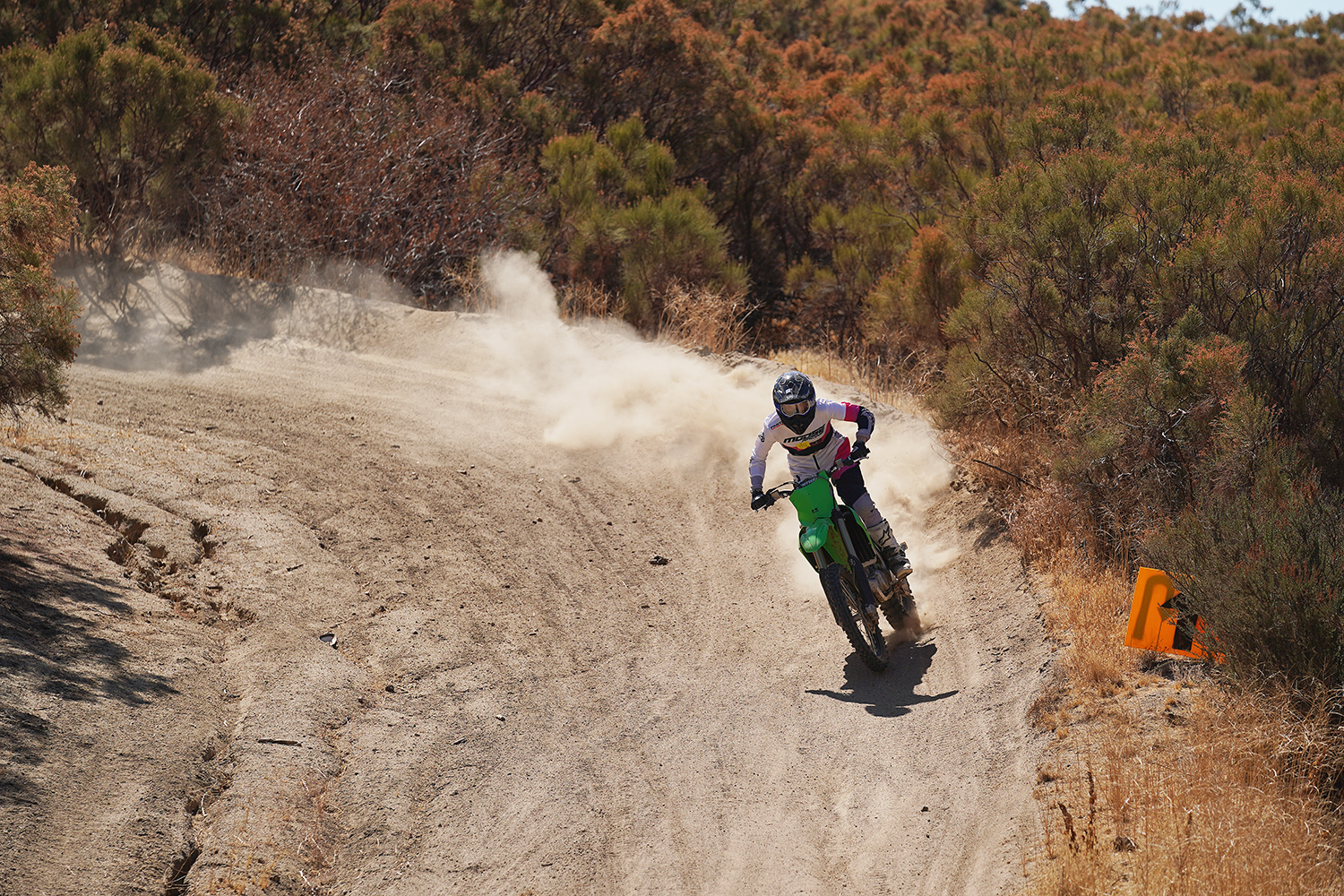
More bikes mean more competition, and with Kawasaki now producing off-road minded motorcycles, things will get more interesting in the next few years. The KX250X and KX450X carry the brand’s race-minded mantra into new segments, with all of the necessary components and features in stock trim, and individuals will be able to fine-tune both bikes to their liking with setup changes or aftermarket accessories.


